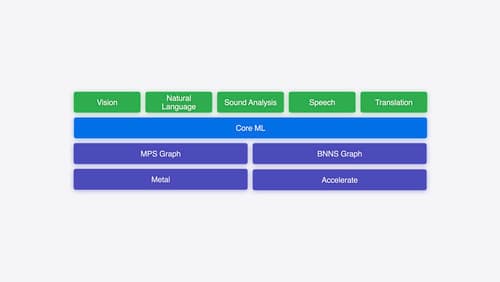Converting llms to coreml
Asked on 2024-08-05
1 search
To convert large language models (LLMs) to Core ML, you can follow these steps as outlined in various WWDC sessions:
-
Model Preparation and Training:
- Start with any PyTorch model. You can use training libraries such as PyTorch or TensorFlow to define and train your model. This phase involves defining the model architecture and providing the right training data.
- Explore machine learning on Apple platforms (07:32)
-
Model Conversion:
- Use Core ML tools to convert your trained model into the Core ML format. Core ML tools is an open-source Python package that contains utilities to optimize and convert models for use with Apple frameworks.
- Core ML tools offer various optimization techniques, such as quantization and efficient key-value caching, to enhance the performance of your model on Apple hardware.
- Bring your machine learning and AI models to Apple silicon (00:59)
- Platforms State of the Union (16:37)
-
Model Optimization:
- Optimize the model for Apple hardware using compression techniques available in Core ML tools. This includes new model compression techniques, the ability to represent state in models, and transformer-specific operations.
- Explore machine learning on Apple platforms (09:33)
- Bring your machine learning and AI models to Apple silicon (22:06)
-
Model Integration:
- Integrate the converted Core ML model into your app using Apple's frameworks. Core ML provides a unified API for performing on-device inference across a wide range of machine learning and AI model types.
- Core ML automatically segments models across CPU, GPU, and neural engine to maximize hardware utilization.
- Deploy machine learning and AI models on-device with Core ML (01:07)
- Explore machine learning on Apple platforms (10:26)
-
Advanced Features:
- Utilize multifunction models to merge multiple models into one, deduplicating shared weights and allowing the model to perform multiple tasks with a shared feature extractor.
- Bring your machine learning and AI models to Apple silicon (27:11)
By following these steps, you can effectively convert and optimize LLMs for deployment on Apple devices using Core ML.

Bring your machine learning and AI models to Apple silicon
Learn how to optimize your machine learning and AI models to leverage the power of Apple silicon. Review model conversion workflows to prepare your models for on-device deployment. Understand model compression techniques that are compatible with Apple silicon, and at what stages in your model deployment workflow you can apply them. We’ll also explore the tradeoffs between storage size, latency, power usage and accuracy.

Platforms State of the Union
Discover the newest advancements on Apple platforms.

Explore machine learning on Apple platforms
Get started with an overview of machine learning frameworks on Apple platforms. Whether you’re implementing your first ML model, or an ML expert, we’ll offer guidance to help you select the right framework for your app’s needs.
